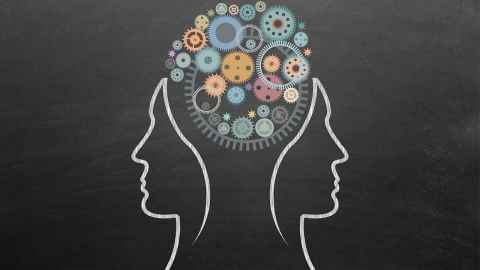How our brains can talk to each other
24 March 2021
Opinion: Science reveals the secrets of our brains when we communicate face-to-face. Ihshan Gumilar says that might help us all become more empathetic.

When we communicate well with each other we talk about feeling ‘in sync’ or ‘in tune’, about being ‘on the same wavelength’.
It turns out these descriptions are much more than just useful metaphors; neuroscientists have discovered that we literally are ‘synched-up’ when our face-to-face engagements are going well.
This connection is known as inter-brain synchrony and researchers have been able to measure and demonstrate this neural activity using a technique called hyperscanning.
Originally developed to assess parapsychology phenomena, hyperscanning enables researchers to record simultaneously the neural activity of multiple people who are interacting socially in the real world (that is, face-to-face). This reveals inter-brain synchrony and provides a neural measure of what it means to be ‘in tune’ – an expression that has gained increasing neuroscientific credibility because of hyperscanning.
Conversely, having this knowledge means the moment we feel ‘out of tune’ – for example, slightly out of a conversation – we should remind ourselves that our brain may not be synchronised enough with the other person or people. Awareness of brain synchronisation provides us with a better understanding of whether we are being listened to, and if people understand what we are talking about.
An interesting experiment tracked the process of teaching for one semester in a classroom. The researchers were able to find the moments when the brain synchronisation was high between students and teacher, and when it dropped. In other words, the experiment provided a neural indicator of when the teachers gained or lost the attention of their students.
Recent studies have also shown that people who have a strong emotional attachment to each other, such as lovers, have a higher level of brain synchronisation than people with less emotional attachment to each other, such as friends and strangers.
However, what we have recently found at the Empathic Computing Lab at the Auckland Bioengineering Institute is that inter-brain synchrony occurs in the Virtual Environment (VE) as well as the real world. In a study published last year, we asked participants to perform a finger-pointing exercise separated by a finger-tracking exercise during which time their neural activity was recorded by electroencephalograph (EEG) hardware - a non-invasive technique in which electrodes are placed along the scalp to record brain activity.
We fitted strangers (in this case, couples not known to each other) with a VR headset so that they could see each other in the form of an avatar. While they interacted via VE, we recorded their brain activities. After analysing the recorded data, the evidence showed that their brains began to synchronise after the first four minutes of interaction. This is the first investigation on brain synchronisation among strangers in VE.
We showed that the finger-pointing exercise elicited the same neurally activated brain region and increased a number of brain connections among participants, in both the real as well as virtual world. We also demonstrated that inter-brain synchrony can be elicited by changing the visual perspective of participants. This is unsurprising – just as eye contact or eye movement affects the way we communicate in the real world, so it seems to be the case in the virtual world.
We are now extending our study to investigate how various cues that we unconsciously pick up in the real world, such as eye contact, hand gestures, can be used to enhance brain synchronicity among people in the remote world.
Our research shows VR could be an exciting platform to explore the phenomena of inter-brain synchrony further and provide a deeper understanding of the neuroscience of human communication.
As the pandemic has reminded us, again and again, we are becoming more and more dependent on the technologies that allow for a range of online activities, from catching up with friends and loved ones, working online, shopping, ordering dinner, changing info on Slack or Teams, getting psychological counselling, or even visiting the doctor on Zoom. Being able to reveal the level of “connectedness” via inter-brain synchrony will help us to understand more about our daily communication in many online fields and improve the way we collaborate and collectively solve problems.
Finally, we live in a changing world in which technology has allowed us to connect with people in more ways than we ever imagined, professionally and personally. But connecting well depends on more than having the technology to connect, it must encompass connections at a psychological and emotional level too - strong social interactions that we want to remember, and which depend on how well we get along with others.
By using VR we are now able to investigate empathy, how that triggers brain synchronisation. Empathy is important factor in any two-way communication process. We hope our research will, in an increasingly online world, also make it a more empathic one.
Ihshan Gumilar is a doctoral candidate at the Auckland Bioengineering Institute.
This article reflects the opinion of the author and not necessarily the views of the University of Auckland.
Used with permission from Newsroom How our brains can talk to each other 23 March 2021.
Media queries
Alison Sims | Research Communications Editor
DDI 09 923 4953
Mob 021 249 0089
Email alison.sims@auckland.ac.nz